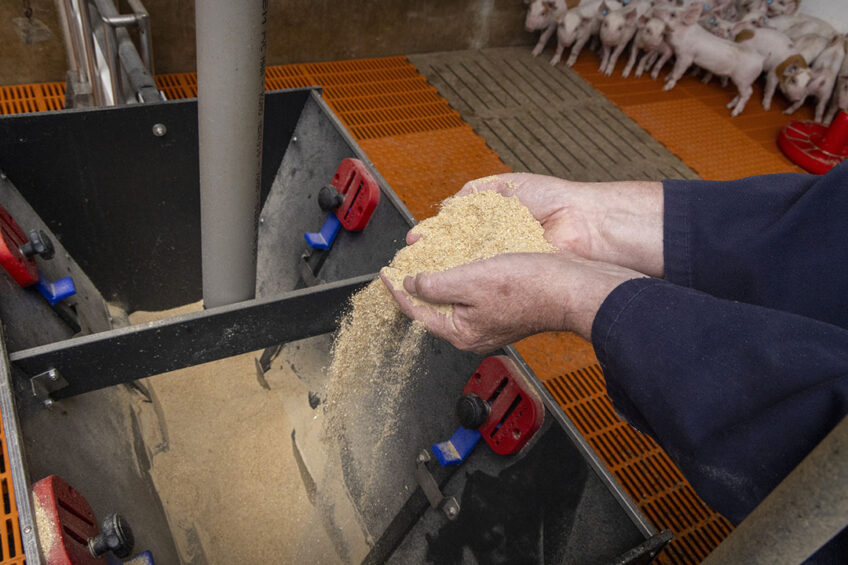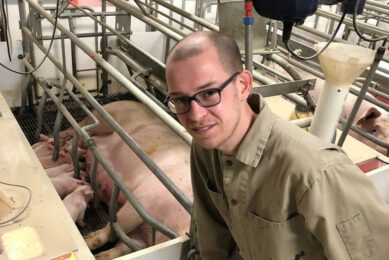Global feed outlook for 2024: Issues, trends, markets and more

Every year brings a mix of newer and more entrenched challenges for the feed industry across the globe, but it also presents new opportunities. As we start 2024, All About Feed contacted some of those on the front line for their views on the factors that will most affect their regions of the world and beyond.
EU elections
Let’s start with Pedro Cordero, President of FEFAC (the organization representing the European Compound Feed & Premix Industry). In his view, the key development for the European feed sector during the coming year will be the EU elections in June.
“After the elections a new European Commission and European Parliament will start a new mandate, and therefore there are only a few months left for EU policy makers to finalise any open-standing legislative tracks,” he says. “The discussions on sustainable agriculture have been very intense during the current mandate, with the EU Green Deal as the main vehicle for legislative proposals. This year will see the beginning of the previously-announced ‘strategic dialogues’ on the future of European agriculture. The EU membership discussions for Ukraine, Moldova and the Western Balkan should also be viewed in this perspective.”
He adds that the EU Deforestation Regulation (EUDR) was concluded and published earlier in 2023, a piece of legislation “bound to set a global precedent that will directly or indirectly impact soy trade flows.” However, there are still many things to be clarified ahead of the entry-into-application date (20 December 2024), and therefore the European feed industry can expect the implementation of the EUDR to dominate the legislative agenda in 2024.
US politics
Politics will also be a big factor in the USA as 2024 progresses. Constance Cullman, President and CEO of the American Feed Industry Association (AFIA), says that the current political uncertainty is posing challenges for long-term business planning.
“With limited time before the next presidential election and congressional campaigns, crucial legislative actions, such as passing the Innovative Feed Enhancement and Economic Development (Innovative FEED) Act and the ‘farm bill,’ remain in limbo,” she reports.
“Our industry needs these bills to improve the regulatory environment for new feed ingredients that could have animal health and production or environmental benefits, and to support ongoing agricultural research, animal disease preparedness efforts and trade. The AFIA has engaged its grassroots advocates to ensure Congress and the Biden administration understand the business climate for the US$267 billion animal food industry, emphasising our role in supporting agriculture, food security, sustainability and the US economy.”
New plant breeding techniques
One important legislative file FEFAC would like to see concluded in 2024 is the proposal for a new regulatory framework for new genomic techniques (NGTs), but whether that will happen is uncertain. “A framework that could stimulate the uptake of plant breeding innovation in Europe is of key importance to compound feed manufacturing,” Cordero notes, “as we have the hope that plant protein production could benefit from this.”
He explains that NGTs are presented by the EU Commission in many aspects as an essential tool to accompany the Farm to Fork Strategy, and a solution to offset the targeted reduction in the use of plant protection products and fertilisers. However, Cordero adds that “due to the sensitive nature of the file, the political negotiations are extremely difficult.”
Sustainability
On the environmental front, FEFAC is looking to further drive discussions on ‘green feed labelling’ in 2024, says Cordera. “We have the availability of tools such as the PEFCR Feed for Food-Producing Animals and the GFLI Database,” he says, “which we have integrated into feed labelling guidance in order to assist compound feed manufacturers with the communication of environmental performance related information to livestock farmer customers.”
Duncan Rowland, Executive Officer of the Feed Ingredients and Additives Association of Australia, reports that sustainability is also a concern in Australia, as it is throughout the world. Building on progress already made, the feed industry should continue to examine rations not only from a least-cost perspective but also from a least-impact perspective. “In Australia,” Rowland says, “we are looking at an overlay using life cycle assessments for individual products.”
In terms of improving sustainability, savings through energy consumption at feed mills would have a big impact, but it’s easier said than done. “The industry in general is looking at how to make mills more efficient,” says Rowland. “However, payback on investment for energy supplementation is just not available presently. Over time, new motors/machinery can be purchased that will assist in reducing consumption, but the cost of energy has increased substantially as we transition to green energy sources such as wind and solar.”
Importance of data
He also stresses the need for data gathering to achieve a continual improvement in production efficiencies, along with new biotechnology solutions. “Additives play a huge role” in his view in ensuring industry meets governmental and individual feed company targets.
New techniques – new possibilities
Roland van der Post, Managing Director at company GMP+ International, also believes that “we will see all sorts of developments” in additives, new protein (e.g. insect production) and much more this year. He highlights the fact that while the global feed chain has a large footprint, there is much innovation power in the sector. “Let’s show the world that we can reduce our carbon footprint,” he says. “These challenges we will facilitate where we can, but without compromising feed safety.”
At the same time, “new techniques will give us new possibilities,” says van der Post. “From satellite images, tracking and tracing, information sharing, to blockchain, AI and more, all this will change and improve our world of supervision and auditing,” he says. “It gives us opportunities to do more remotely, with less travelling and less cost, but also to be more thorough. We can check, with intelligent solutions, all the administrative topics instead of doing sampling.”
Sourcing feed and feed costs
Risks of diseases such as highly-pathogenic avian influenza (HPAI) and African Swine Fever will most certainly again be factors to be reckoned with in 2024 in Europe. The spread of HPAI in 2023 severely impacted poultry feed production, notes Cordera, and in 2024 FEFAC hopes EU policy makers will continue to assess long-term access to feed ingredients (bearing in mind the unstable political environment).
Indeed, Rowland notes that since COVID, the start of the Ukraine/Russia war, and due to response to emergency animal diseases (EADs) in feed plants worldwide, supply constraints and high prices have strongly affected the feed industry in Australia and other global regions – and prices have stayed high.
In the USA, the feed industry continues to face challenges of fluctuating energy costs. “Adding to that stress is the threat of losing access to vital supplies of ingredients from foreign countries due to rising geopolitical tensions,” says Cullman. “The AFIA leadership identified the US reliance on vitamin imports from China as a priority area of concern for the US animal food industry. This supply situation requires development of a strategy to reduce risks and diversify the US vitamin supply chain and provide insight to prevent future dependencies on other critical animal food inputs, such as amino acids and trace minerals.”
Staffing – attracting new talent
Sustaining staffing levels in the feed industry is getting harder to achieve in the USA and Australia, report both Cullman and Rowland.
Rowland reports that no growth in staffing numbers is taking place in Australia and lists several solutions that should be explored there and elsewhere in 2024. To attract new talent, “we need to make the feed industry sexy,” he says. “We also need to train our staff members and provide them with a future within the industry.”
Looking forward
Roland stresses that animal agriculture, in its production of nutrient-dense food, has a continued role to play in feeding our population. “Science supports the inclusion of animal-based food throughout the world,” he says. “The feed industry is consistently looking at how we can help. We are constantly looking at how we can improve production efficiencies. Again, additives play a huge role in achieving more with less.”
Cullman points out that “as we saw at the recent United Nations Climate Change Conference (COP28), detractors of nutritious animal-based foods in diets continue to call for transformational change.” Therefore, she says, “we must stay engaged with global partners to shape international policies or risk farmers losing access to vital tools.”
The AFIA welcomed a UN Food and Agriculture Organization report (released at COP28) which showed a decrease from 14% to 12% of global greenhouse gas emissions originating from livestock systems, proof that the steps taken by the livestock farming community over the past several years are having an impact.











